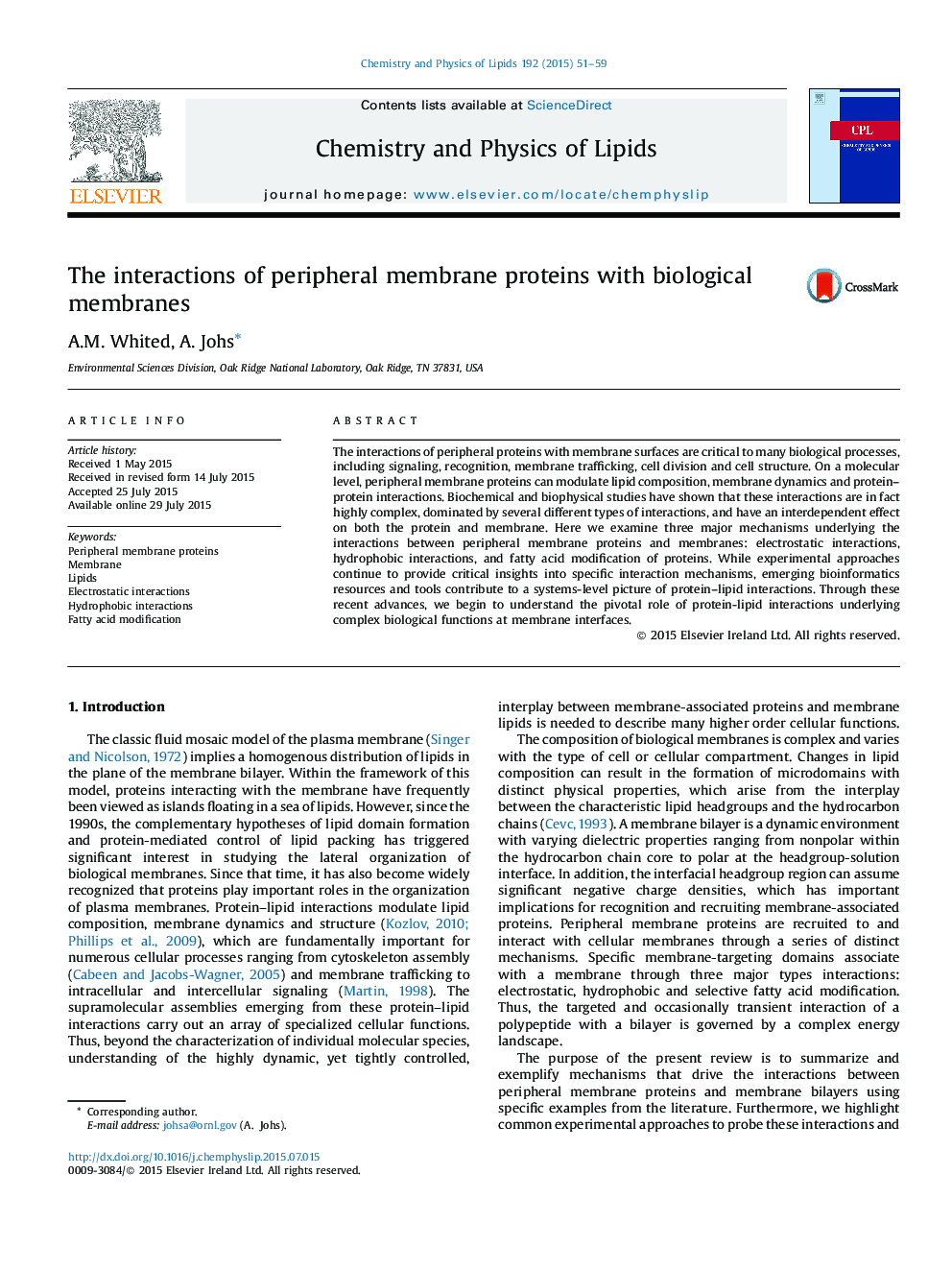| کد مقاله | کد نشریه | سال انتشار | مقاله انگلیسی | نسخه تمام متن |
|---|---|---|---|---|
| 1251617 | 1496285 | 2015 | 9 صفحه PDF | دانلود رایگان |
• Interactions between peripheral membrane proteins and biological membranes are essential for many biological functions.
• Electrostatic interactions are long range and recruit proteins to the membrane nonspecifically.
• Hydrophobic amino acids facilitate partitioning into the hydrophobic bilayer core.
• Posttranslational modifications help anchor proteins to the membrane surface.
• Combining experimental and computational approaches enables new insights into biological processes at membrane interfaces.
The interactions of peripheral proteins with membrane surfaces are critical to many biological processes, including signaling, recognition, membrane trafficking, cell division and cell structure. On a molecular level, peripheral membrane proteins can modulate lipid composition, membrane dynamics and protein–protein interactions. Biochemical and biophysical studies have shown that these interactions are in fact highly complex, dominated by several different types of interactions, and have an interdependent effect on both the protein and membrane. Here we examine three major mechanisms underlying the interactions between peripheral membrane proteins and membranes: electrostatic interactions, hydrophobic interactions, and fatty acid modification of proteins. While experimental approaches continue to provide critical insights into specific interaction mechanisms, emerging bioinformatics resources and tools contribute to a systems-level picture of protein–lipid interactions. Through these recent advances, we begin to understand the pivotal role of protein-lipid interactions underlying complex biological functions at membrane interfaces.
Journal: Chemistry and Physics of Lipids - Volume 192, November 2015, Pages 51–59
